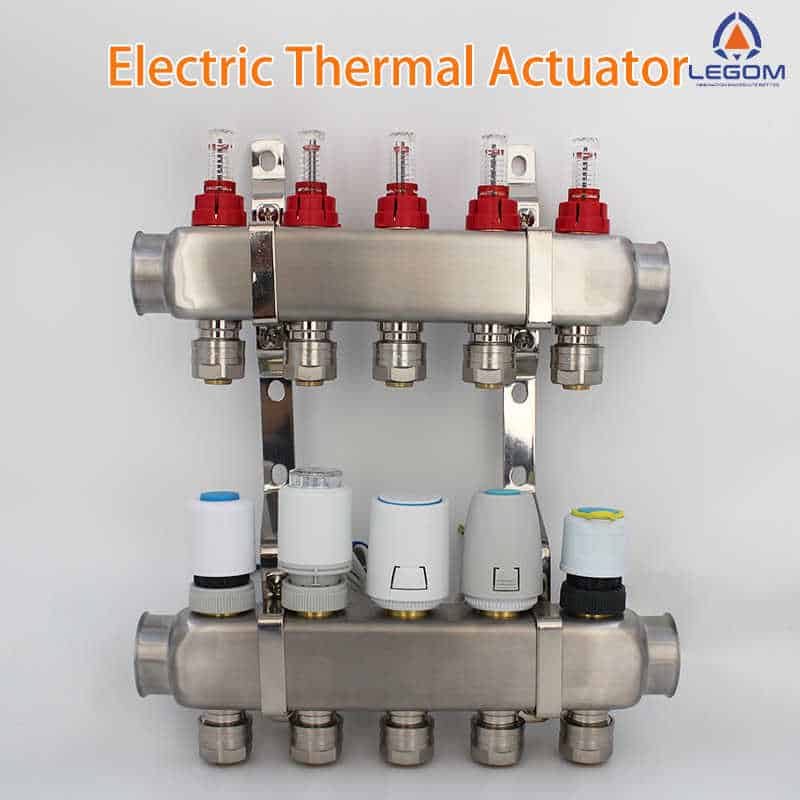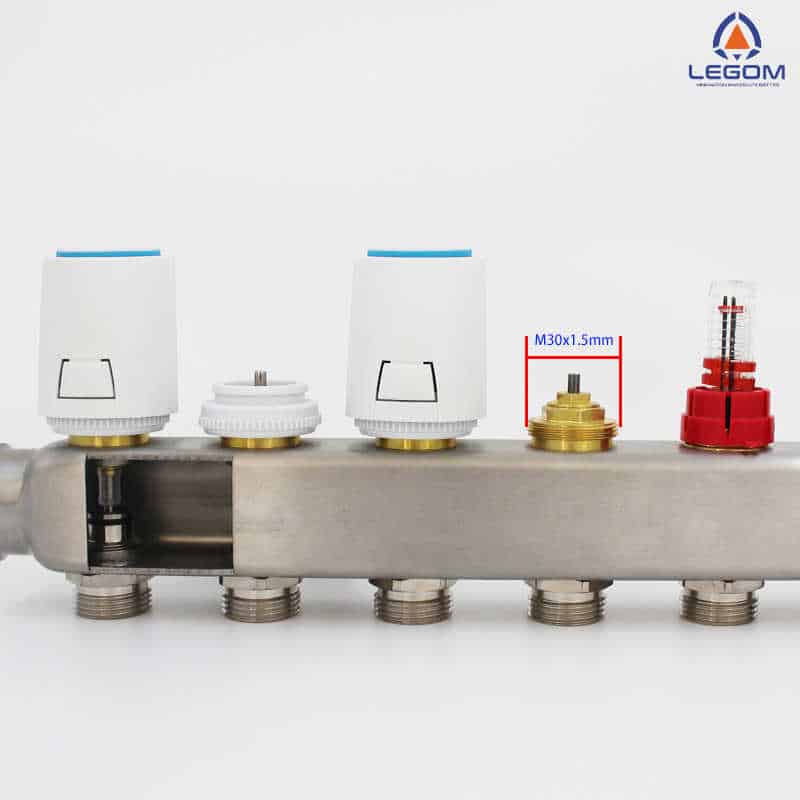
A thermal actuator is a component in the main operation of a device that produces linear movement. The expansion and contraction of heat sensitive materials within the device causes the thermal actuator to move linearly. It is to unify temperature sensing and actuation into one device. You can find the thermal actuator working principles in thermostat products, thermal bypass valve products, thermostatic balancing valves, and many more.
Any device that can control temperature, mix fluids, stop high temperatures, and protect against freezing is in need of a thermal actuator. The thermal actuator has a main element that can expand and contract according to temperature and then make the piston move. This key element is a temperature sensing material which can be a liquid.
A substance such as wax, a gas, and other materials whose volume can change based on temperature. Many use wax as a key element where the wax is in engineering process carefully so that phase changes can occur within a certain temperature range. Just like when the material passes the melting point.
Even solid wax will become liquid when it passes the melting point. It is increasing its volume. Then the piston will move. After a while, the temperature drops again even below the melting point. This makes the wax turn back into a solid from a liquid. The pressure on the diaphragm will decrease and the piston will return to its initial position.
Contents
Basic Thermal Actuator Working Principles
Thermal actuators are important devices in HVAC industry that utilize the principle of thermal expansion to convert temperature changes into mechanical motion. This process begins with the selection of materials that have a high coefficient of thermal expansion. When exposed to a heat source, which could be electrical, chemical, or environmental, these materials expand. This expansion is cleverly designed to translate into mechanical movement, such as a piston moving or a rotary motion, depending on the design of the actuator.
The control and precision of these actuators are remarkable. By regulating the temperature, the extent of the material’s expansion and thus the movement of the actuator can be precisely controlled. This is often managed through sophisticated control systems that monitor and adjust the heat input as needed. Once the heat source is reduced or removed, the material contracts back to its original size, allowing the actuator to return to its initial state. Thermal actuators find their applications in various fields, notably in HVAC controls, valve operations in piping systems, and in machinery where precise motion control in response to temperature changes is essential. Their reliability and ability to operate without external power in some cases make them an invaluable tool in industrial and commercial settings.
The Advantages of Using a Thermal Actuator
Any equipment that requires temperature regulation and a valve control system always needs a thermal actuator working principles. Thermal actuators have a number of advantages for fast temperature setting, energy saving and adequate control systems.
You can imagine if we still use traditional principles for temperature setting. How much electrical power will the equipment require? Then, how long do we have to wait until the equipment works to heat the room or water?
Thermal actuators are a solution for building owners as well as our planet so they can reduce the use of materials that have the potential to damage the environment in the future. We no longer need to use batteries or dc power supplies and solenoids. Electricity use may also decrease. We know that current electrical energy sources still use fossil fuels which have a negative impact on the environment.
Thermal valves do not require electricity. This is good as the thermal actuator will definitely not experience power failure. Then there will be no electrical short circuit at all. So, what other advantages are there in thermal actuators?
Installation of Thermal Actuator

The components in the thermal actuator are quite simple. This makes installation of thermal actuators faster. Apart from that, the total cost of manufacturing and installation is lower than traditional systems. The component size of this actuator is also compact so it can save installation space.
Reliable in Extreme Conditions
A fast and efficient thermal actuator system is always safer and superior to traditional setups. There will be no electrical short circuit in every working step and the output force is also high without any worry.
Very Economical
The long service life of each thermal actuator product makes people hunt for it. This guarantee comes entirely from the company that produces it from quality materials. During the period of use there is no sound at all so it doesn’t cause noise and air pollution around you. Meanwhile, what is most surprising is that you don’t need to carry out regular maintenance and periodic calibration on the thermal actuator.
Thermal Actuator Applications
The material that is often an important part of the thermal actuator is wax. The use of wax is suitable for any reason. Wax has the property of not being compressed easily so it is easy to produce large forces. If there is no thermal actuator with wax then there will be no underfloor heating that can last a long time and save energy.
World aerospace products also need thermal actuator working principle to make smooth movements in any process. Thermostatic actuators do not require electrical energy. This actuator can release its own energy so it has potential for applications in explosion proof environments. All movements are only temperature based so that the actuator can integrate with various objects, systems, and manifolds.
All systems that require a more powerful source during power outages should have this thermal actuator technology. A number of special designs for hydraulic oil cooling for ground military equipment and electronic cooling for high performance aircraft also employ the thermal actuator working principles in a specialized manner. Army tanks also have thermostatic control or their heat exchangers. Likewise, naval radar systems require as fast temperature control as possible.
Thermal Actuator Manufacturer
The applications of the thermal actuator working principles are so wide. Starting from your own home, factories, up to the country’s military defense. Legom Smart, as an HVAC supplier and manufacturer, is very proud to be part of the many industries that require energy efficiency today. We have been working on some wide inventions of the newest thermal actuators.
Meanwhile, several large supplies to various countries have succeeded in being a solution for their energy efficiency. Environmental pollution from waste products from electric fuel has also managed to fall to a much lower figure. More than 90 countries have used our thermal actuators. More than 400 partners have become our bridge in introducing our superior products. For more information, you can contact us online or directly visit our marketing office and factory in China. Lastly, please view our video below to see our thermal actuator assembly process in the factory.
